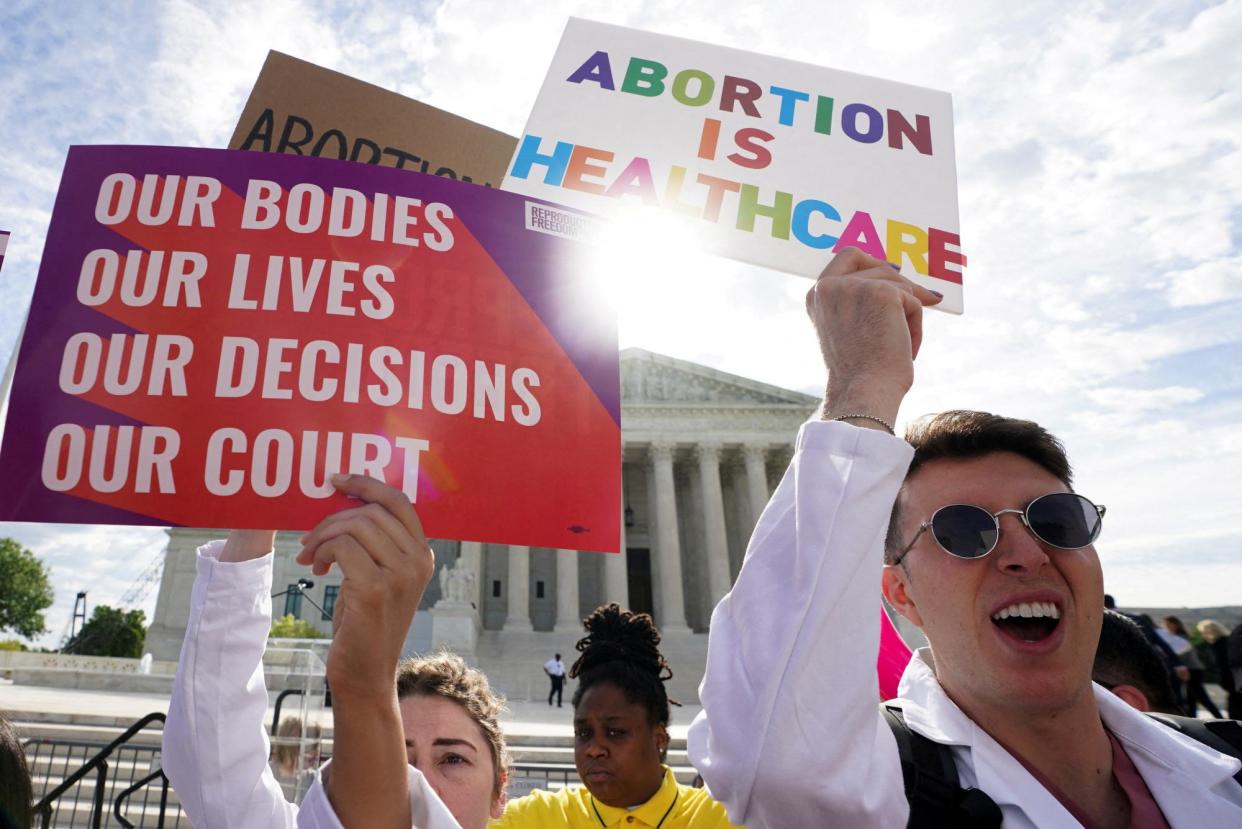Abortion restrictions tied to higher rates of intimate partner homicide, says study

A new study finds abortion restrictions may be associated with increased rates of intimate partner homicide among reproductive-aged women and girls.
Related: Judge blocks New York abortion rights amendment due to go before voters
Notably, the study looks at the period before the US supreme court overturned the national right to abortion in 2022, when states could restrict – but not outlaw – abortion. Fourteen states have since banned the procedure.
As a result, the dynamics identified in the research may in fact be significantly exacerbated, even if they are not yet reflected in the data.
Even though intimate partner homicide is relatively rare, “it is consistently among the leading causes of death in pregnant and postpartum people,” said Maeve Wallace, an associate professor at Tulane University in Louisiana, and a reproductive and perinatal epidemiologist who led the study. The report was published as a research letter in the journal Health Affairs.
Other studies have found that women and girls often seek abortions to leave abusive relationships or avoid bringing children into abusive relationships.
“In thinking about pregnancy itself as a risk factor for homicide, it follows that the ability to prevent or end a pregnancy” could have “immediate implications” for women’s safety, said Wallace.
Researchers conducted the study by looking at five separate abortion restrictions – all laws designed to restrict abortion access without improving patient safety – and the rates reported in the National Violent Death Reporting System maintained by the Centers for Disease Control and Prevention (CDC).
The authors of the study then controlled for a variety of factors known to affect the rate of intimate partner violence – including income inequality, gun ownership and even party control of the state legislature.
Researchers also expanded the typical definition of “reproductive-aged” to include girls as young as 10. They did this based on case reports of girls as young as 13 experiencing intimate or familial violence and analyzed the years 2014 to 2020, which represents the most recent available data.
For each of the five studied abortion restrictions, the rate of intimate partner homicide among girls and women ages 10 to 44 years old increased 3.4%, researches found. Extrapolated across the US, that finding could indicate an additional 24 women and girls died of intimate partner homicide during the years covered by the study. The research follows other studies which found Trap restrictions – measures that regulate where abortions may be provided and performed – are also associated with increased risk of suicide among reproductive-aged women.
Not every state was included in the analysis. Researchers only included states where 100% of localities reported to the violent deaths database. That ruled out three of the most populous and diverse states in the US – California, Florida and Texas. In total, the analysis captured about 52% of girls and women ages 10 to 44 living in the US.
Additionally, because there were very few identified cases of homicide among pregnant and postpartum women, girls and women of reproductive age were effectively a proxy measure for likely pregnant or postpartum victims of violence.
Wallace said the research is almost certainly an underestimate of the potential risk to pregnant and postpartum women, because intimate partner violence is generally underreported.
Intimate partner homicide is “the super extreme relatively rare outcome”, said Wallace. However, an estimated 41% of women in the US have experienced intimate partner violence, making “the burden … huge”.

 Yahoo News
Yahoo News 
